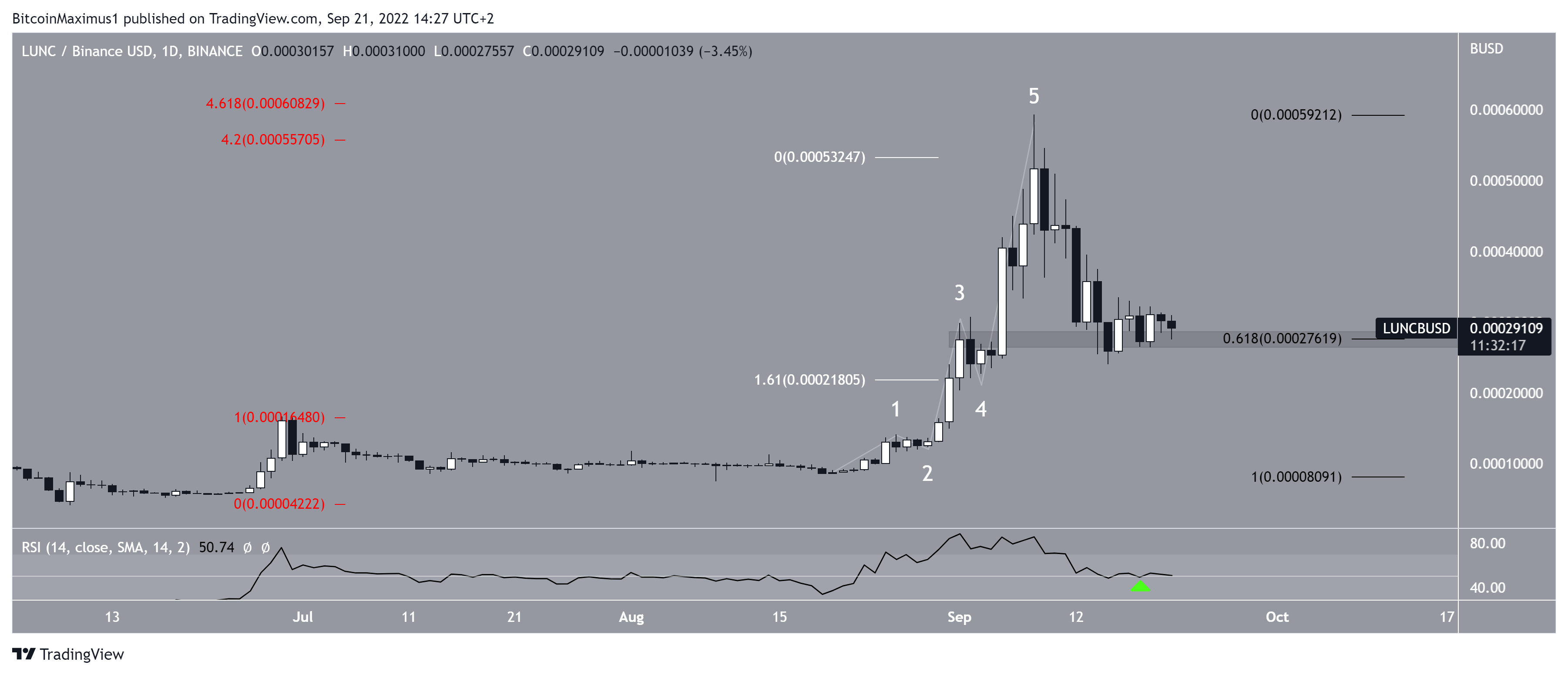Terra Classic (LUNC) has regained its footing after decreasing sharply for nearly two weeks. On the other hand, Terra (LUNA) shows no signs of a bullish reversal and is trading in a bearish pattern.
Updated Sep. 23, at 5:30 PM UTC: Binance confirms an opt-in button for users to pay a 1.2% tax for LUNC trading, “when the opt-in accounts reach a holding of 25% of the total LUNC held on Binance, we start to charge 1.2% tax for all opt-in traders when they trade LUNC,” reads the blog post.
SponsoredUpdated Sep. 23, at 1:00 PM UTC: Changpeng Zhao, Binance’s CEO, said that another option to the 1.2% tax burn could be to “implement a feature to let users opt-in for a 1.2% trading fee themselves for burn. And see how many of the voting community do that first.” Zhao said that the idea should be for users to vote with their fees.
Update: LUNA Classic (LUNC) has successfully implemented a 1.2% tax burn on all on-chain transactions within the network. The new mechanism took place at the block height of 9,475,200 on Sept. 21 after undergoing a controversial community vote. The tax burn will continue until the total supply of LUNC reaches 10 billion, going from a current total supply of 6.9 trillion.
Terraform Labs’ stablecoin UST and cryptocurrency LUNA imploded in May, after a death spiral caused the price of LUNA to decrease by more than 99.99%.
Since then, Do Kwon, the founder of Terraform Labs, has attempted to initiate a revival of the ecosystem with Terra 2.0. He has not taken any responsibility for the aforementioned crash.
Last week, South Korean authorities issued an arrest warrant for Do Kwon claiming that he is on the run. Do Kwon himself has denied these rumors, however, he has failed so far to provide his location.
South Korean prosecutors have refuted these claims, instead stating that Do Kwon is not cooperating with the authorities and has no intentions of appearing for questioning. As a result, they have asked the foreign ministry to revoke his passport.
SponsoredLUNC bounces at support
LUNC has been falling since reaching a high of $0.00059 on Sept. 8. The high was made at a confluence of important Fib levels, created by the 4.2-4.618 extension of the original upward movement (red) and the 1.61 length of waves one and three (white). Therefore, it was expected to act as a significant local top.
The ongoing downward movement has led to a low of $0.00024 on Sept. 15. The low and ensuing bounce served to validate the $0.00027 support, which is both a horizontal support area and the 0.618 Fib retracement support level.
Additionally, the daily RSI has bounced at the 50 line (green icon). Therefore, if LUNC does not reach a daily close below this level, it is likely that it will initiate a significant bounce and potentially resume the upward movement that began on Aug. 15 (white).

LUNA shows signs of weakness
LUNA has also decreased sharply since Sept. 9, falling by 66% so far. However, unlike LUNC, it is not showing any bullish signs. On the contrary, the price has created consecutive lower highs, a sign of weakness that supports the continuation of the downward movement.
Moreover, the six-hour RSI is below 50, a bearish sign that indicates that a breakdown is likely. If LUNA falls below the current support of $2.60, the next closest support area would be at $1.60.

For Be[In]Crypto’s latest Bitcoin (BTC) analysis, click here

